
Numbers in Indigenous languages was something that was generally collected by linguists, anthropologists and others with an interest in Aboriginal and Torres Strait Islander cultures. The perception was that Indigenous counting systems were fairly simple and consisted of "one, two, three, four, five, mobs" or as in the image above 'many'. As recent as 1981, Blake in his publication Australian Aboriginal Languages stated "no Australian Aboriginal language has a word for a number higher than five!" A recent research article by Claire Bowern explores how the concept of numbers in Australian Indigenous Languages has changed over time, including 'losing or gaining numbers'.

Ethnomathematics in Australia screenshot.
AIATSIS in their on-line exhibition "Ethnomathematics in Australia" has a series of research articles which dispute these misperceptions. Harris (1987) in his paper "Australian Aboriginal and Islander Mathematics" provides several examples of languages, including Anindilyakwa (NT), Kokata (SA) and Tiwi (NT) which have words for numbers greater than five!

Harris also refers to Haddon on his expedition to the Torres Strait in 1890 recording words from Muralug Island (Kala Lagaw Ya) for one hundred = maura and one thousand = kai gasa. The above image is taken from the Haddon's Report of the Cambridge Anthropological Expedition to the Torres Strait; however in the text Haddon indicates 'these are not true numerals'.
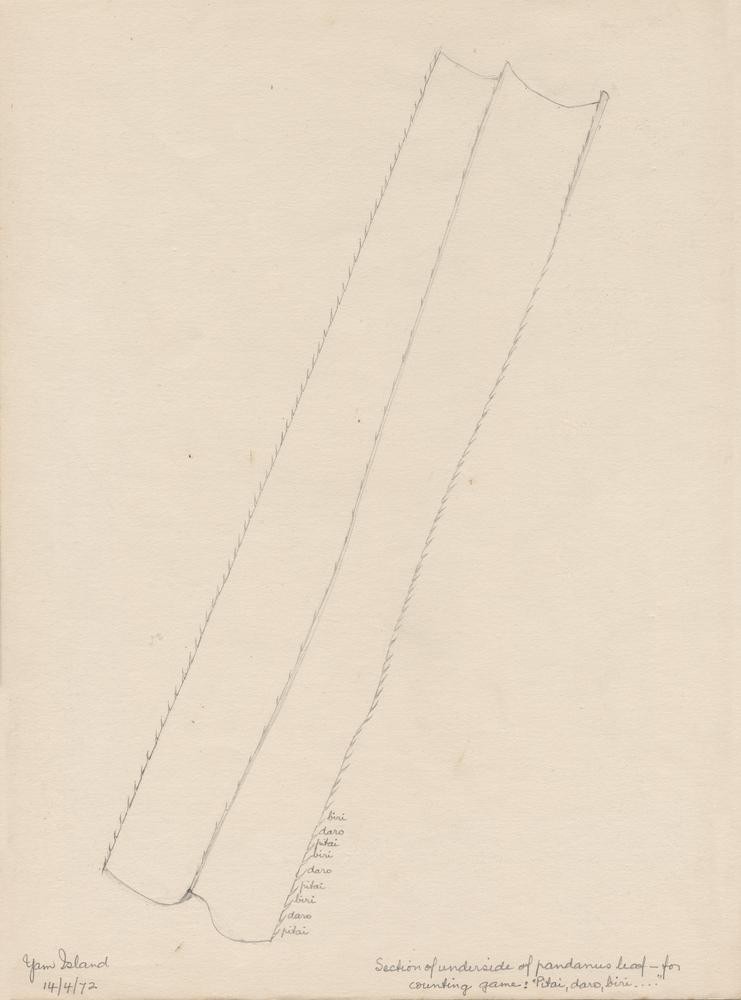
The above image from the Margaret Lawrie Collection is a sketch of a pandanus leaf which was used in a counting game by children on Yam Island; the item was collected in 1972. A series of words can be seen along the bottom right side of the leaf.
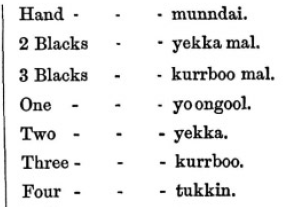
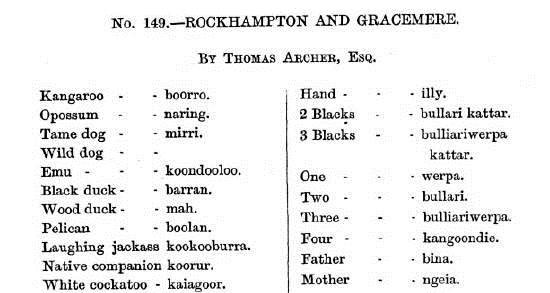
Curr 149 Rockhampton and Gracemere wordlist.
The early collectors of words, such as Curr included numbers on their wordlists; generally 1-5. Words collected for more than five usually referred to 'many' or 'a great many'. One of the common trends in number systems, particularly in Eastern Australian languages is a counting system based on 1, 2, 3 , 4 and 5 . The image below from Curr's Australian Race wordlists was collected on Stradbroke Island by George Watkin and shows this pattern.
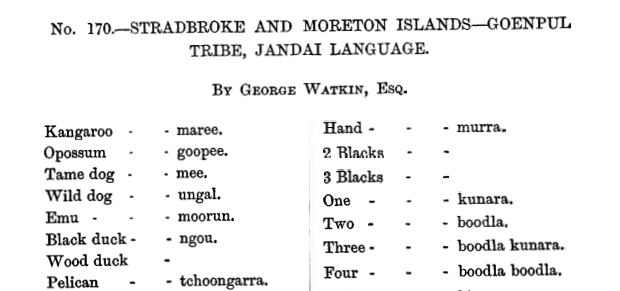
Curr 170 Stradbroke Island numbers.
This extended to counting systems based on fives, using hands and feet to assist in counting. Often the word for five was the same word used for hand. For example, Ian Sim in his work on Yuwaalawaay language near Goodooga on the Queensland-New South Wales Border identifies the following pattern for counting: biyarr-maa = 5 or one hand (literal translation) while bulaarruu-maa = 10 or two hands (literal translation).
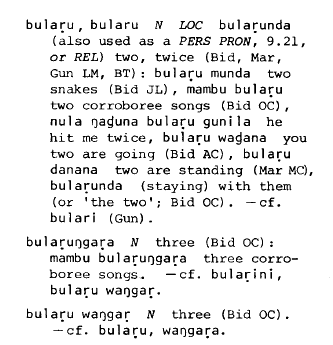
Holmer - Linguistic Survey of South-Eastern Queensland.
In South-East Queensland language groups, wangra or wangarra is a common word for 'one' while bular or bularu is a commonly used word for 'two' in South-East Queensland; from this we also find bularu wongarra as the word for 'three' and bularu bularu the word for 'four'. Holmer's Linguistic Survey of South-Eastern Queensland provides the above example from Gungarri and Bidjara languages in the Maranoa and Warrego regions.
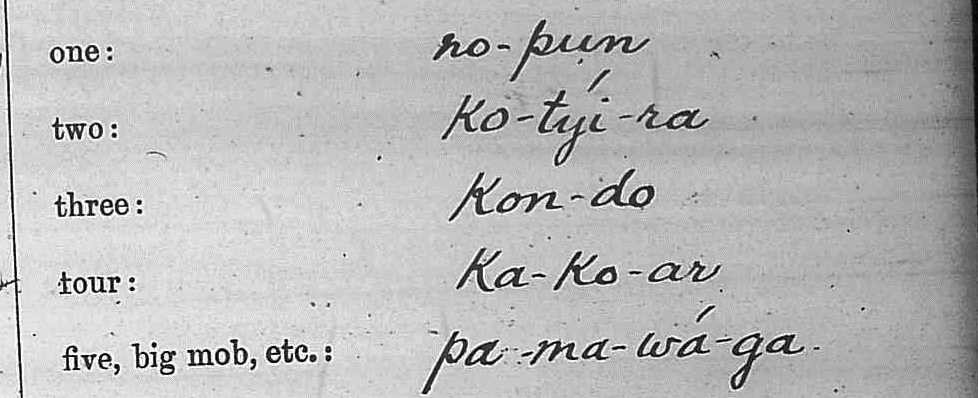
Roth - Gugu Yimiddhirr numbers.
State Library is compiling a list of numbers from Aboriginal and Torres Strait Islander languages across Queensland and will place these online for use by communities, schools, kindergartens and other groups. The Indigenous Numbers wordlist can be found on the State Library's Indigenous Languages webpages - it features over 70 Indigenous languages and dialects.
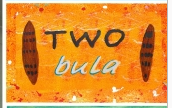
State Library would love to hear from Indigenous groups or language workers and some of the language activities they may be doing around numbers.
Desmond Crump
Indigenous Languages Coordinator, Queensland Memory
State Library of Queensland Indigenous Languages webpages
References and Further Reading
Barlow, H. (1873) “Vocabulary of Aboriginal Dialects of Queensland”, The Journal of the Anthropological Institute of Great Britain and Ireland, 1873, Vol.2, pp.165-175.
Blake, B. J. (1981) Australian Aboriginal languages. G 499.15 1981
Curr, E. M. (1887) The Australian Race: its origins, languages, customs, place of landing in Australia and the routes by which it spread itself over that continent. RBF 572.994 cur
Giacon, J. and Sim, J. (1998) Yuwaalayaay, the language of the Narran River. P 499.15 yuw
Haddon, A. C. (1908) Reports of the Cambridge Anthropological Expedition to Torres Straits. Q 994.38 CAM
Harris, J. (1987) "Australian Aboriginal and Islander Mathematics" in Australian Aboriginal Studies, 1987, No. 2. .
Holmer, N. (1983) Linguistic Survey of South-Eastern Queensland. J 499.15 HOL
Lawrie, M. (1972) Underside of pandanus leaf used for children's counting game. Image number: TR1791-213v000r001
Websites
AIATSIS Online Exhibition: Ethnomathmatics in Australia.
Comments
Your email address will not be published.
We welcome relevant, respectful comments.